October 24, 2024 at 7:00 a.m.
FROM ON HIGH
VATICAN CITY — More than two dozen popes have celebrated Mass under the giant canopy that rises over the main altar of St. Peter’s Basilica, but the impressive view from the top of the 100-foot-tall bronze structure has been reserved for a select few: cleaners, contractors and restoration experts.
Since February the imposing 17th-century canopy, known as a baldachin, has been shrouded in scaffolding as restorers gradually worked their way up to the top of the 10-story structure, affording them the most intimate view of the towering structure seen by anyone since its last professional restoration in 1758, more than 260 years ago.
Nine months after the start of the restoration work, funded by the U.S.-based Knights of Columbus, the baldachin will be unveiled — with its original shine restored — for a Mass celebrated by Pope Francis on Oct. 27 at the close of the Synod of Bishops, the Vatican announced.
Journalists were given a sneak peek at the restoration Oct. 8, revealing a vivid display of gold that had been hidden behind layers of dust and grime, which had accumulated on its ornate decorations for nearly three centuries.
 A statue of a cherub holding the papal tiara is seen atop the 17th-century canopy over the main altar of St. Peter’s Basilica and surrounded by scaffolding during restoration work at the Vatican Oct. 8, 2024. (CNS photo/Lola Gomez)
A statue of a cherub holding the papal tiara is seen atop the 17th-century canopy over the main altar of St. Peter’s Basilica and surrounded by scaffolding during restoration work at the Vatican Oct. 8, 2024. (CNS photo/Lola Gomez)
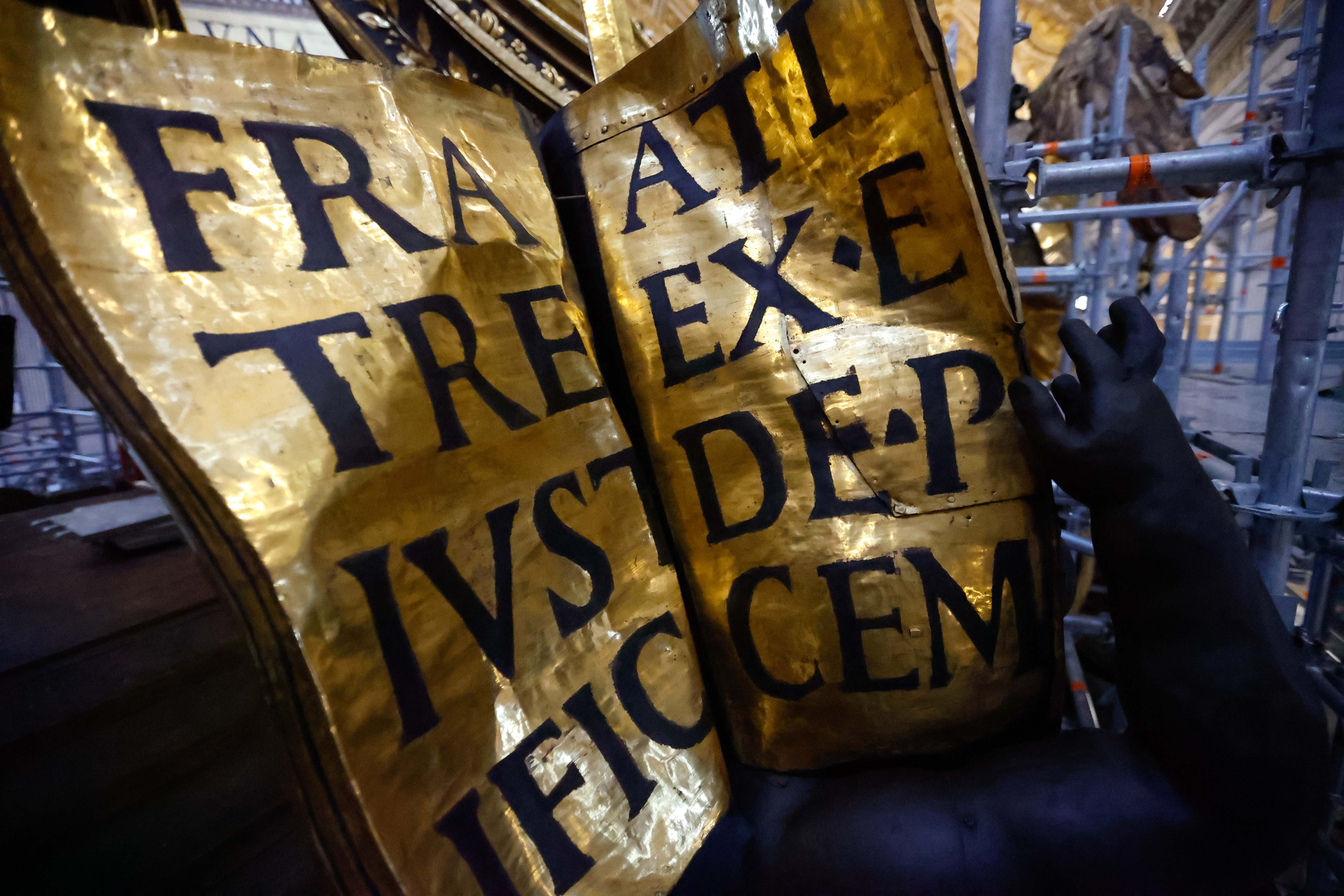 A gilded banner held by a statue as part of the 17th-century canopy standing over the main altar of St. Peter’s Basilica is seen during restoration work at the Vatican Oct. 8, 2024. (CNS photo/Lola Gomez)
A gilded banner held by a statue as part of the 17th-century canopy standing over the main altar of St. Peter’s Basilica is seen during restoration work at the Vatican Oct. 8, 2024. (CNS photo/Lola Gomez) Franciscan Father Enzo Fortunato, communications director of St. Peter’s Basilica, told Catholic News Service the Mass also coincides with the anniversary of the World Day of Prayer for Peace celebrated by St. John Paul II, who invited the leaders of various religious traditions to Assisi, Italy, in 1986, to pray for peace. The baldachin’s inauguration on that date, therefore, “calls to mind not only beauty, but the centrality of peace in the church’s work.”
But before the Catholic faithful can see the baldachin in its full splendor, final touches must be made to the structure designed by Gian Lorenzo Bernini, as well as to the sculpture above the basilica’s Altar of the Chair, which is also being restored.
During the restoration, the Chair of St. Peter — traditionally believed to have belonged to St. Peter, the first pope — was temporarily removed from its place within Bernini’s sculpture above the basilica’s back altar.
Pilgrims and tourists are part of the challenge. As the basilica empties of its thousands of daily visitors and temperatures drop, particularly in winter, the cooled bronze sculptures develop condensation, trapping dust particles against their gilded surfaces, said Alberto Capitanucci, the head engineer of the Fabbrica di San Pietro, which is the office responsible for upkeep of the basilica. Over time, the dust thickens and the once-brilliant golden glow fades to a deep mahogany hue.
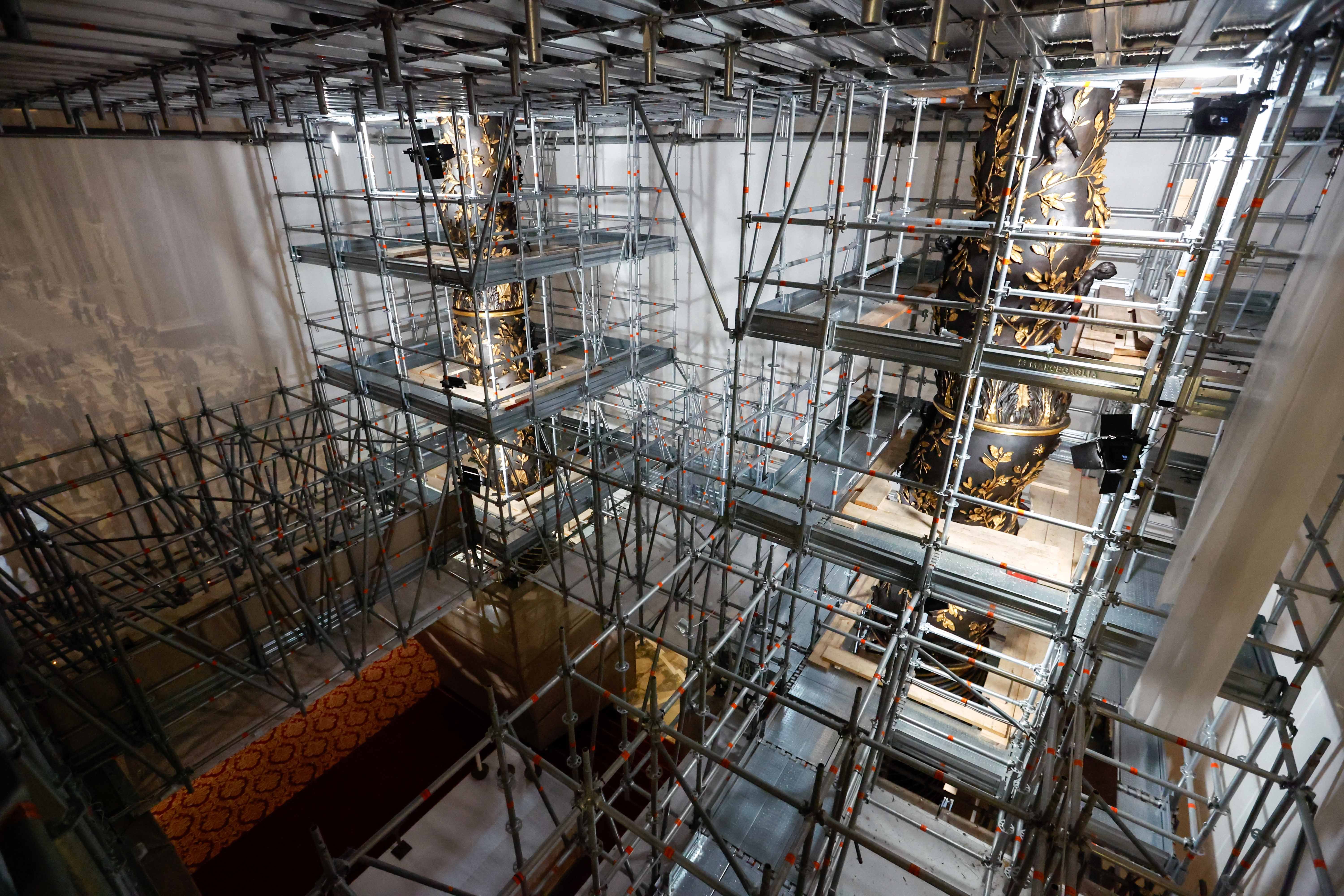 Extensive scaffolding surrounds the 17th-century canopy standing over the main altar (photo/Lola Gomaz)
Extensive scaffolding surrounds the 17th-century canopy standing over the main altar (photo/Lola Gomaz) During the press tour of the renovation work, tubing snaked around the intricate network of scaffolding above the Altar of the Chair, transporting wastewater used to clean the sculpture. Restoration workers could be seen pouring buckets into funnels, carrying centuries-old dirt down 50-foot tubes into big buckets on the ground.
Atop the baldachin were receptacles containing debris likely dating back to the structure’s last professional restoration. Among the objects found inside were the worn-down sole of an old shoe and a discarded 17th-century grocery list.
Workers also discovered small engravings and graffiti left by their predecessors — workers from past centuries who climbed the towering structure to clean and repair it. Among the markings were prayers, signatures and messages. One engraving was from a 15-year-old boy recounting his first time climbing the baldacchino; another was a confession from someone who said he would soon be dismissed from the Vatican for stealing, and his note marks his last time on the canopy.
Up close, previously unseen details come into view, such as the abundance of golden bees — a symbol of the Barberini family who commissioned the work, and to which Pope Urban VIII, the pope at the time of its construction, belonged.
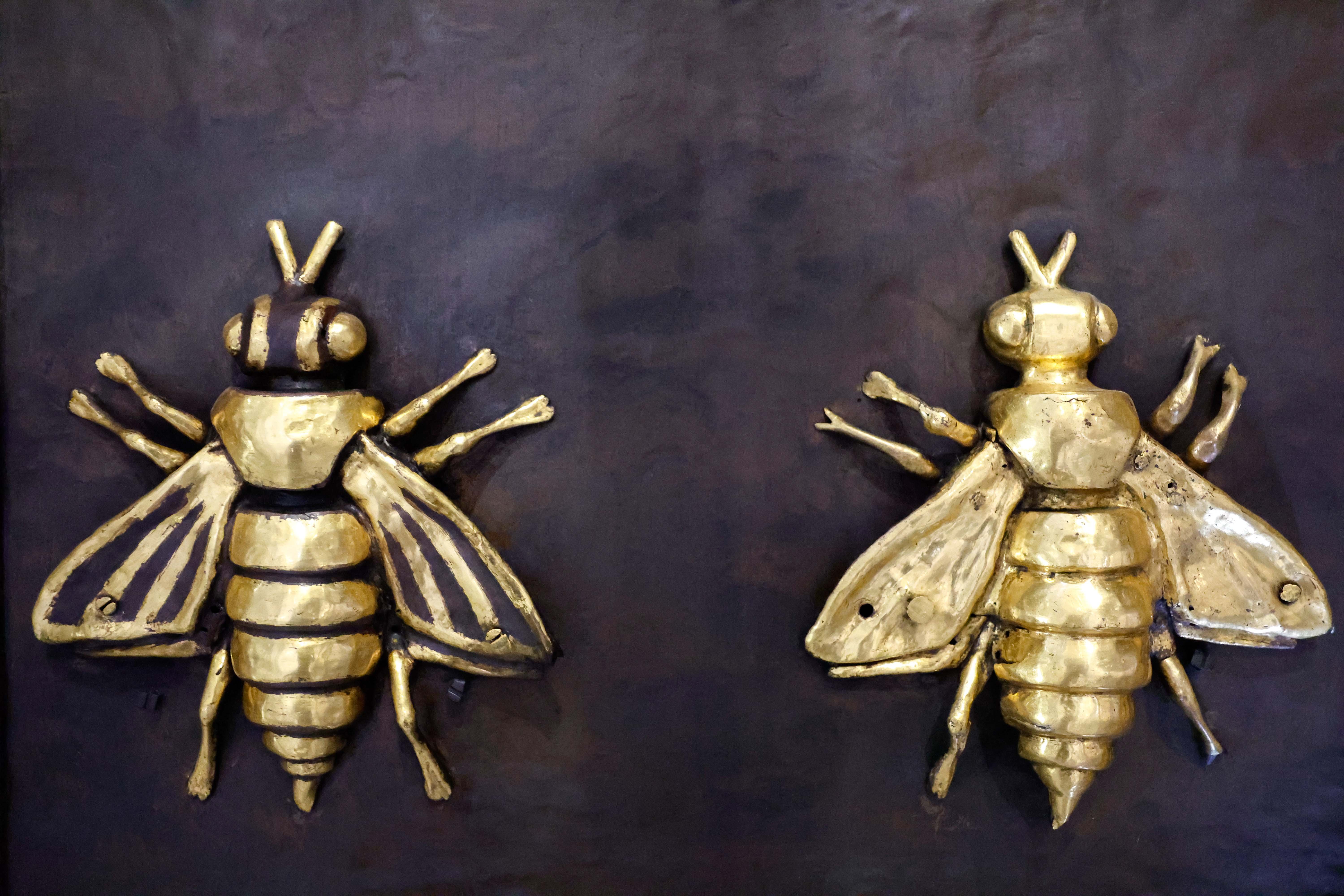 Golden bees adorning the 17th-century canopy standing over the main altar of St. Peter’s Basilica are seen during restoration work at the Vatican Oct. 8, 2024. (CNS photo/Lola Gomez)
Golden bees adorning the 17th-century canopy standing over the main altar of St. Peter’s Basilica are seen during restoration work at the Vatican Oct. 8, 2024. (CNS photo/Lola Gomez) Yet the baldachin’s full effect will not be visible until the scaffolding comes down and the restored structure stands unobstructed in the center of the basilica, its gold details reflecting the light that pours in from the domes above, just as Bernini intended.
“Our world is much brighter than that of even 100 years ago,” Capitanucci told CNS. Therefore, the use of gold was “not only a display of power, including economic power, it was also a functional tool” to reflect the natural light entering the basilica and make it “jump out” against the dark wood and bronze of the baldachin.
“The use of gold is related to our perception of light,” he said. “Light always has a positive meaning, there is no darkness in heaven.”
- Annunciation Church to be reconsecrated before Mass there resumes
- Twin Cities community mourns, prays following Annunciation School shooting
- How AI should — and should not — be used in the workplace
- Brave new classroom: Catholic schools nationwide integrate AI into teaching plans
- Time magazine honors Pope Leo XIV, calling him a ‘spiritual counterweight’ to Silicon Valley
- Pope talks about what St. Augustine has given him and taught him
- Friar behind ‘Rosary in a Year’ explores Jesus Christ’s ‘blueprint’ in the beatitudes
- Nicaraguan-style law used to expel religious groups stokes fears in El Salvador
- LIVE UPDATES: Parents, clergy grapple with aftermath of Annunciation shooting
- Pope appoints Filipino-born priest as San Jose auxiliary bishop




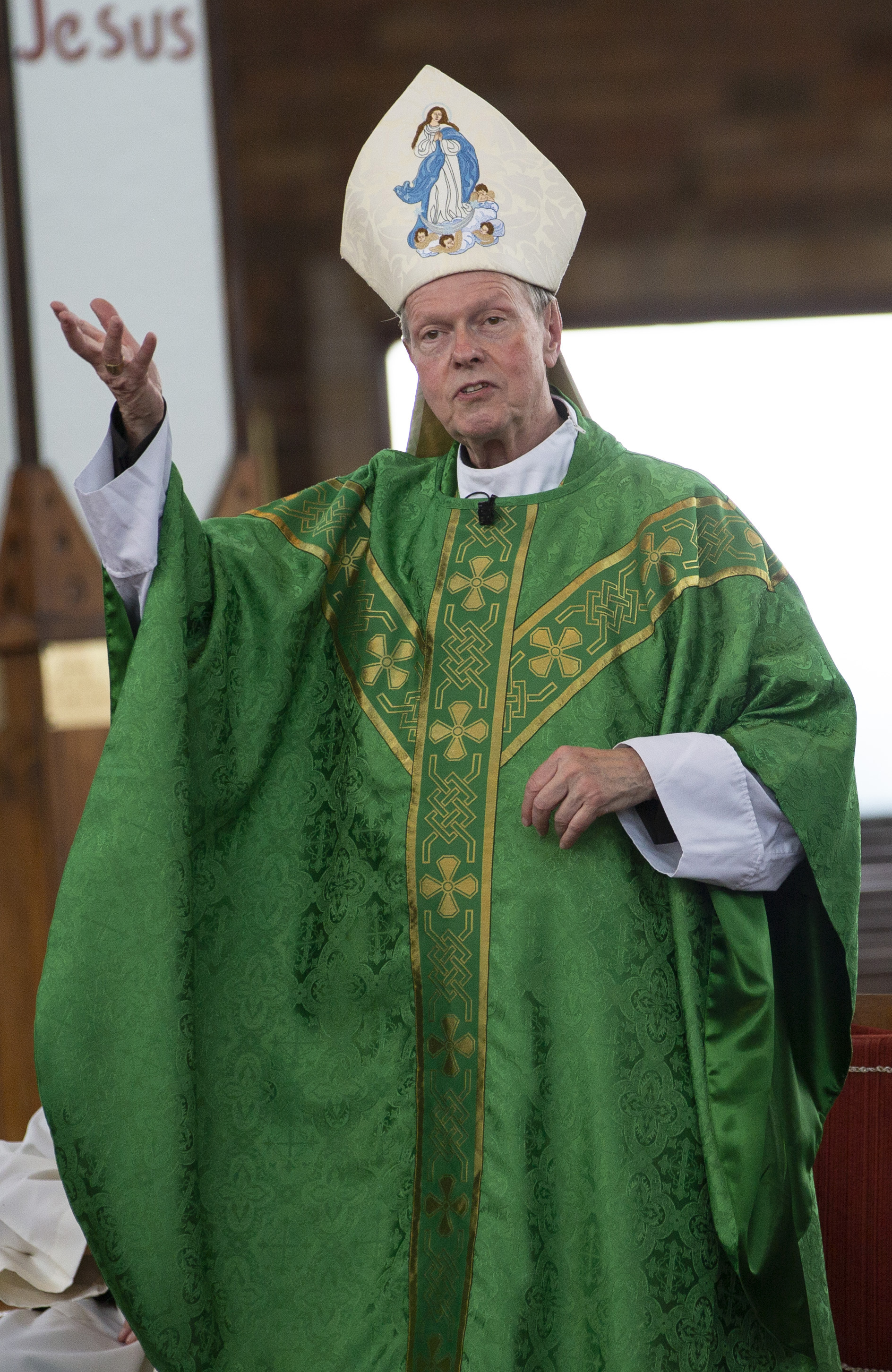


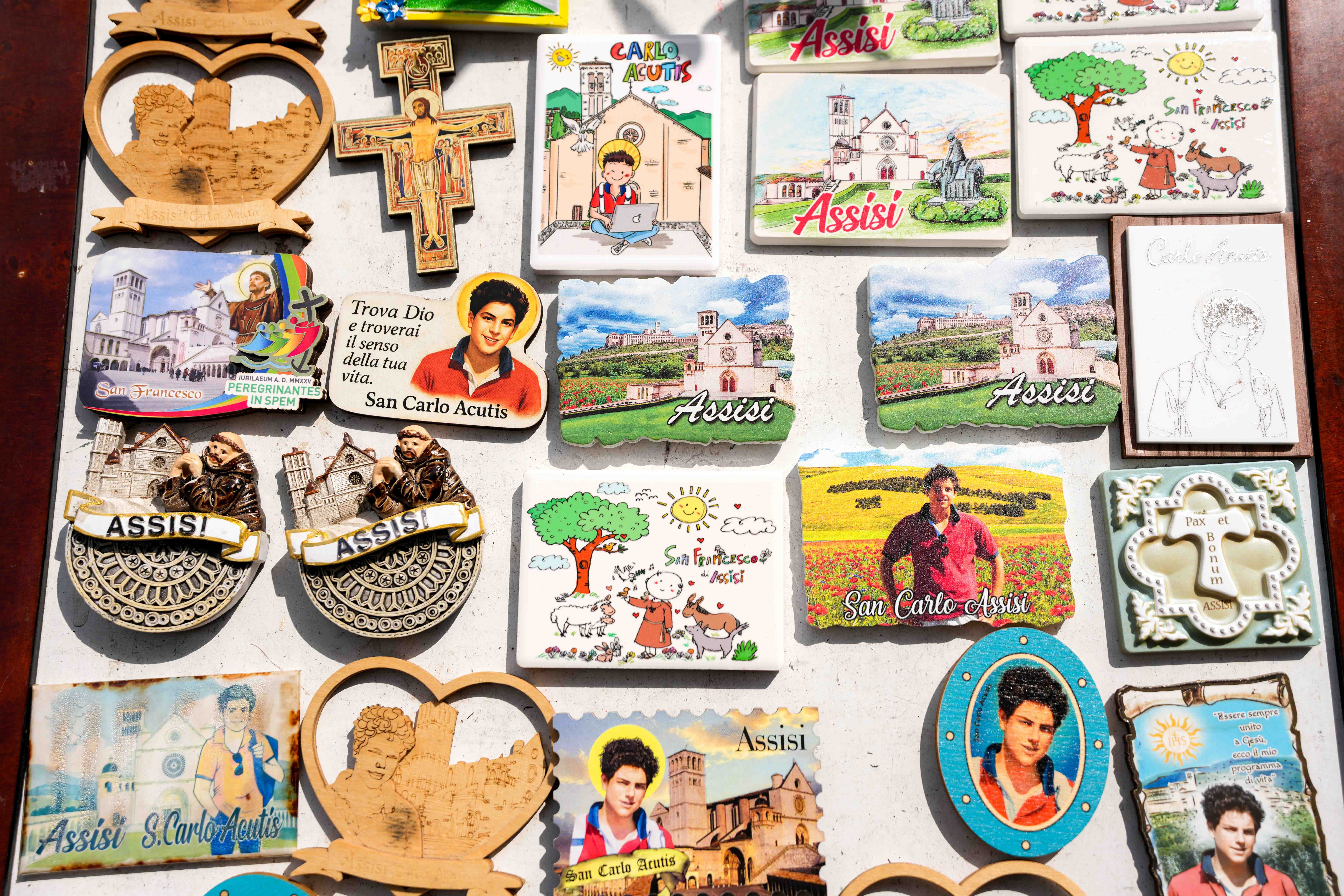
Comments:
You must login to comment.